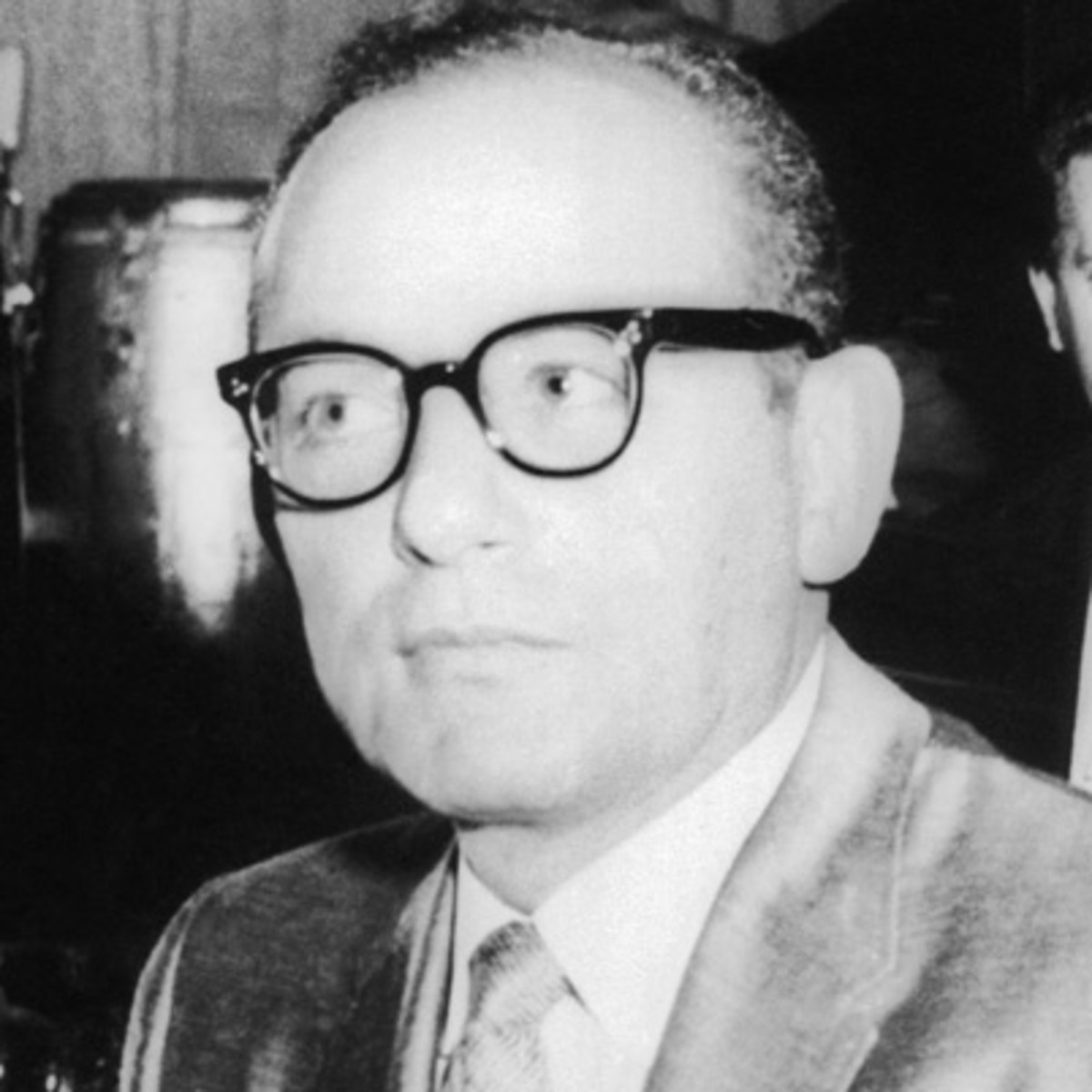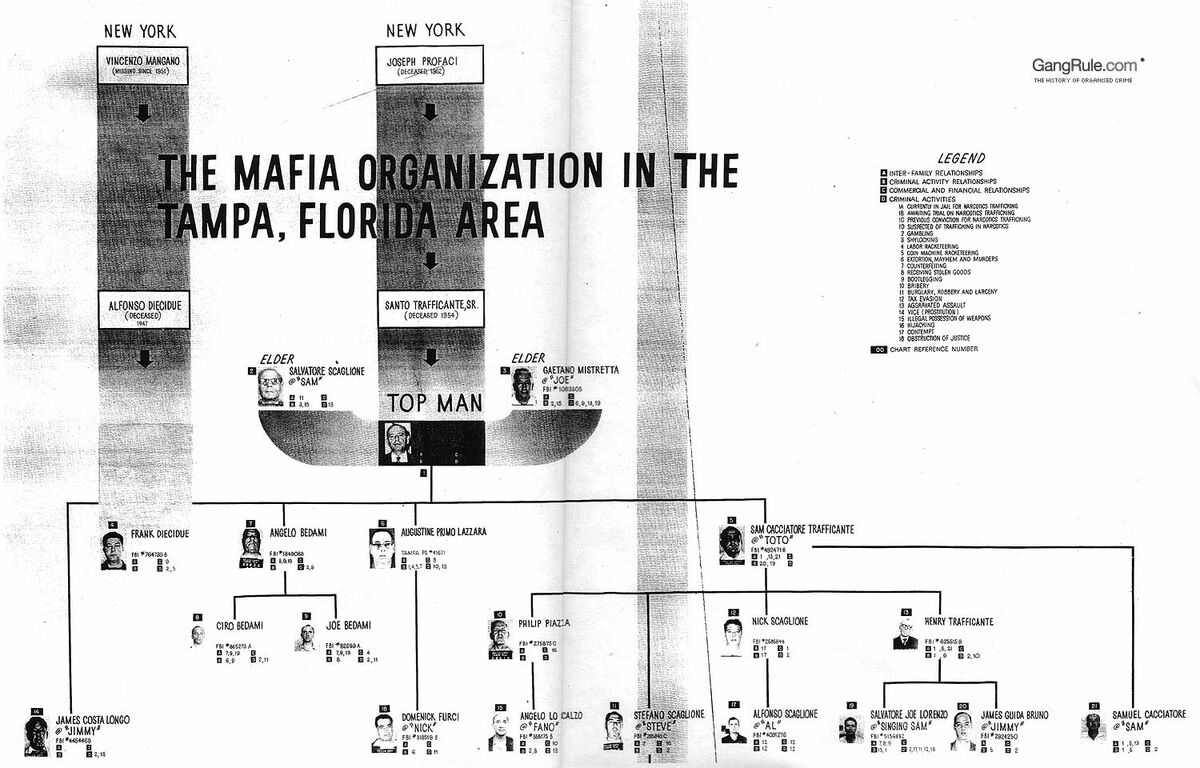Have you ever wondered about the less talked about parts of Florida's past? The kind of stories that shaped certain areas, yet stay somewhat in the shadows? Well, today, we are going to talk about the traficante family, a name that brings up images of a different era in the Sunshine State. It's a story that, in a way, shows how some groups came to have a lot of influence in specific places, especially in the mid-20th century.
This particular family, the Trafficantes, played a really big part in the history of organized crime, especially around the Tampa area. Their presence, you know, was felt across various businesses and local happenings for many decades. It's a piece of history that, for many, remains somewhat of a mystery, yet it truly impacted the social fabric of its time.
Understanding the traficante family helps us get a clearer picture of how certain societal structures and power dynamics developed in parts of the United States. It's not just about crime; it's also about how communities functioned and how different forces interacted. So, let's take a closer look at this interesting part of history, shall we?
Table of Contents
- Biography of Santo Trafficante Jr.
- Personal Details: Santo Trafficante Jr.
- The Early Years and Rise to Prominence
- Operations and Influence
- Connections Beyond Florida
- The Later Years and Decline
- Legacy and Public Perception
- Frequently Asked Questions
Biography of Santo Trafficante Jr.
Santo Trafficante Jr. stands as a central figure when anyone talks about the traficante family. He was, to be honest, a very significant leader in the organized crime scene in Florida for a long time. His story is deeply tied to the history of Tampa and its connections to the wider world of illegal activities. He took over from his father, Santo Trafficante Sr., and really expanded the family's reach.
Born in Tampa, Florida, in 1914, Santo Jr. grew up in a place where such activities were already a part of the city's hidden side. His father had built a certain level of standing, and Santo Jr. was, you know, prepared to take on that mantle. He was known for being quite careful and keeping a low profile, which helped him stay in charge for many years without drawing too much attention from the public or the authorities, at least not always.
His leadership was marked by a preference for quiet dealings over open displays of force. This approach allowed the traficante family to maintain a strong hold on various illegal operations, from gambling to other ventures. He was, in some respects, a very different kind of leader compared to some of his more flamboyant counterparts in other cities. He just seemed to prefer working behind the scenes, and that really worked for him.
Santo Jr.'s influence was not just limited to Florida, either. He formed important connections with figures in other parts of the United States and even in Cuba, particularly before the Cuban Revolution. These connections were, you know, quite important for the family's overall business. He was a person who understood how to build alliances and keep things running smoothly, which is a pretty big deal in that kind of world.
Throughout his time, he faced various challenges, including investigations and legal pressures. Yet, he managed to avoid major convictions for a long, long time. This ability to evade serious legal trouble is, in a way, a testament to his careful nature and the way he ran his operations. He passed away in 1987, bringing an end to an important chapter for the traficante family and Florida's history.
Personal Details: Santo Trafficante Jr.
| Detail | Information |
|---|---|
| Born | November 15, 1914, Tampa, Florida, U.S. |
| Died | August 11, 1987 (aged 72), Tampa, Florida, U.S. |
| Nationality | American |
| Notable Role | Long-time leader of the Trafficante crime family in Florida |
| Known For | Organized crime activities, influence in Florida and Cuba |
The Early Years and Rise to Prominence
The roots of the traficante family's power stretch back to the early 20th century in Tampa, Florida. Santo Trafficante Sr., Santo Jr.'s father, began to establish the family's presence during a time when many immigrants were settling in the area. He started with more traditional criminal activities, like illegal gambling and small-scale rackets. This was, you know, how many such groups got their start in different cities across the country.
Tampa, with its port and diverse population, offered a fertile ground for these kinds of operations to grow. The city was, in some respects, a bit of a melting pot, and certain areas developed their own rules, separate from the official ones. The elder Trafficante slowly built a network, gaining influence and control over various illicit ventures. He was, apparently, a shrewd operator who knew how to make things work.
When Santo Jr. came of age, he quickly became involved in the family's activities. He learned the ropes from his father, observing how to manage operations, deal with rivals, and handle the legal system. This training was, you know, pretty thorough, preparing him for the significant role he would later play. He seemed to have a natural talent for it, too.
The transition of leadership from father to son was, basically, a smooth one. Santo Jr. inherited a well-established organization, and he used his own skills to expand it even further. He saw opportunities that his father might not have, and he was able to take the family's operations to a different level. This period marked the true rise of the traficante family as a major force in the region, a truly significant moment for them.
During these early years, the family's influence spread beyond just gambling. They got involved in other illicit trades, and they also started to gain a quiet hold on some legitimate businesses. This blending of legal and illegal activities was, in a way, a key part of their strategy, helping them to solidify their position and make a lot of money. They were, you know, pretty good at staying hidden while still being very effective.
Operations and Influence
The traficante family's operations were quite varied, showing a clear pattern of adapting to different times and opportunities. Their main income came from illegal gambling, which included casinos, card games, and numbers rackets. These operations were, you know, very profitable and formed the backbone of their financial strength. They ran these games with a certain level of organization that made them hard to disrupt.
Beyond gambling, the family also had interests in other areas. They were involved in loan sharking, where they would lend money at very high interest rates. This was, in some respects, another way to make a lot of money and to gain control over people who needed funds. They also dealt in various contraband goods, which changed over time depending on what was profitable and what could be moved easily through the port of Tampa.
Their influence wasn't just about illegal activities, though. The traficante family also held a quiet sway over certain legitimate businesses. They would, for example, invest in restaurants, nightclubs, and other establishments. This helped them to, you know, clean money and also gave them a front for their other dealings. It made them seem like regular business people, which was pretty useful for them.
They also had connections within the political landscape of Florida, particularly at the local level. This didn't mean they controlled everything, but they could, you know, sometimes get favors or avoid trouble. These ties allowed them to operate with a certain degree of freedom for many years. It was, basically, a system where certain people looked the other way, or at least didn't look too closely.
The family's power was built on a mix of loyalty, fear, and careful planning. They were known for being less violent than some other crime groups, preferring to resolve issues through negotiation or quiet pressure. This approach, you know, helped them maintain stability and avoid drawing too much attention from law enforcement, which was always a big concern for them. They were, in a way, quite strategic in their actions.
Connections Beyond Florida
The reach of the traficante family went far beyond the borders of Florida, especially under Santo Trafficante Jr.'s leadership. He built important relationships with other powerful crime figures across the United States. This included, for example, connections with groups in New York, Chicago, and New Orleans. These alliances were, you know, very important for expanding their operations and protecting their interests.
Perhaps their most significant international connection was with Cuba, particularly before the Cuban Revolution in 1959. The family had substantial gambling interests in Havana, running casinos and other entertainment venues. These operations were, in some respects, incredibly profitable and gave them a strong foothold outside the U.S. It was, apparently, a very lucrative time for them.
Santo Jr. spent a good deal of time in Cuba, managing these ventures and working closely with other American crime figures who also had interests there. He developed strong ties with Cuban officials and business people, ensuring his operations ran smoothly. This period was, you know, a golden age for the family's international dealings, really boosting their standing.
When Fidel Castro came to power, these Cuban operations were, basically, shut down. This was a major blow to the traficante family's finances and influence. It forced them to shift their focus back to Florida and look for new opportunities. The loss of Cuba was, in a way, a turning point for them, making them adapt to a new reality.
Despite this setback, Santo Jr. maintained his connections with other crime leaders. These relationships were, you know, very important for sharing information and coordinating activities across different regions. He was, in fact, a respected figure in the broader network of organized crime, showing his ability to build and keep alliances even when things changed.
The Later Years and Decline
As the decades went on, the traficante family, like many other organized crime groups, began to face increased pressure. Law enforcement agencies, both local and federal, became much more determined to crack down on these activities. This meant, you know, more investigations, more arrests, and a tougher environment for them to operate in. The times were, basically, changing.
Santo Trafficante Jr. himself became a target of several major investigations. He was called to testify before various government committees, including those looking into organized crime and even the assassination of President John F. Kennedy. While he was never convicted of major crimes related to these inquiries, the scrutiny was, you know, constant and draining. It was a very difficult period for him.
The Racketeer Influenced and Corrupt Organizations (RICO) Act, passed in 1970, gave prosecutors new tools to go after organized crime. This law made it much easier to target the leaders and financial structures of such groups, rather than just individual acts of crime. This was, in some respects, a very significant challenge for the traficante family and others like them.
The family's influence also began to wane as the original generation of leaders grew older or passed away. Finding new people with the same level of trust and capability was, you know, pretty hard. The old ways of doing things were becoming less effective in a changing world. It was, apparently, harder to keep things quiet and out of sight.
Santo Trafficante Jr. passed away in 1987. His death marked, basically, the end of the traficante family's prominence as a major organized crime force. While some remnants of their activities might have continued, the centralized power and wide-ranging influence they once held were, you know, largely gone. It was, in a way, the close of a long chapter in Florida's hidden history.
Legacy and Public Perception
The legacy of the traficante family is a complex one, deeply woven into the fabric of Florida's history, especially in Tampa. For many years, their presence was a known, yet often unspoken, part of the community. They were, in some respects, figures of both fear and a strange kind of respect, depending on who you asked. It's a very interesting mix of feelings.
Their story reminds us of a time when organized crime had a more visible, albeit often hidden, role in American cities. It shows how such groups could, you know, operate for extended periods, influencing local economies and even politics. The family's ability to maintain power for so long, despite law enforcement efforts, is a notable aspect of their story. They were, apparently, quite skilled at what they did.
Today, the traficante family is mostly remembered through historical accounts, books, and documentaries. Their story continues to fascinate people interested in true crime and the history of the United States. It offers, in a way, a glimpse into the darker side of American enterprise and power. People are, you know, still very curious about these kinds of things.
It's important to approach this history with a clear mind, recognizing the harm caused by such activities while also trying to understand the circumstances that allowed them to thrive. The story of the traficante family is, basically, a reminder that history is full of many different kinds of people and groups, all playing their part in shaping the world we know. To learn more about on our site, you can explore other historical accounts.
The public perception of the family has shifted over time. What was once a more immediate, local presence is now, you know, a subject of historical study and popular culture. Their story helps us understand the complexities of urban development and the forces that shaped communities in the past. You can also find more stories like this by looking at , which offers more insights into hidden histories.
Frequently Asked Questions
Here are some common questions people often have about the Trafficante family:
1. Who was Santo Trafficante Jr.?
Santo Trafficante Jr. was, you know, the main leader of the Trafficante crime family in Florida for many years. He took over from his father and expanded the family's reach, especially in gambling and other illegal activities, both in Florida and in Cuba. He was, apparently, a very careful and quiet person who avoided a lot of direct attention.
2. What was the Trafficante family known for?
The traficante family was known for its deep involvement in organized crime, particularly illegal gambling, loan sharking, and other illicit trades. They had, in some respects, a strong influence in Tampa, Florida, and also built significant connections with other crime groups across the U.S. and in pre-revolutionary Cuba. They were, basically, a very powerful group in their time.
3. Did the Trafficante family have ties outside Florida?
Yes, the traficante family, especially under Santo Trafficante Jr., had many ties outside Florida. They connected with other crime figures in cities like New York, Chicago, and New Orleans. Their most notable international connection was with Cuba, where they operated several profitable casinos before the Cuban Revolution. These connections were, you know, very important for their business.
For further reading on the broader context of organized crime history, you might find information from historical archives useful. For example, the National Archives and Records Administration often holds documents related to various investigations. You can, you know, sometimes find interesting details there about past events. Learn more at the National Archives website.



Detail Author:
- Name : Jamel Lynch
- Username : mina36
- Email : rodger.kerluke@borer.com
- Birthdate : 2005-09-18
- Address : 154 Marlen Crescent South Ezrabury, WI 72043
- Phone : 641-403-0124
- Company : Murray LLC
- Job : Purchasing Agent
- Bio : Laborum qui aut sed quia blanditiis. Est dolore ut nobis natus.
Socials
facebook:
- url : https://facebook.com/buckridge1984
- username : buckridge1984
- bio : Recusandae sit eum repudiandae. Nemo recusandae aut quos libero sint.
- followers : 2056
- following : 2284
tiktok:
- url : https://tiktok.com/@buckridger
- username : buckridger
- bio : Perspiciatis voluptatum fugiat optio soluta voluptates distinctio dolor.
- followers : 812
- following : 1366